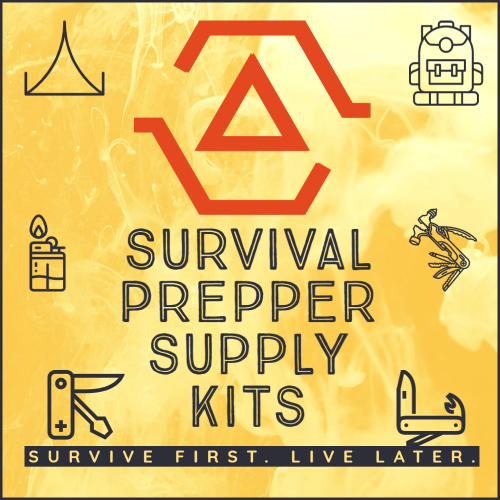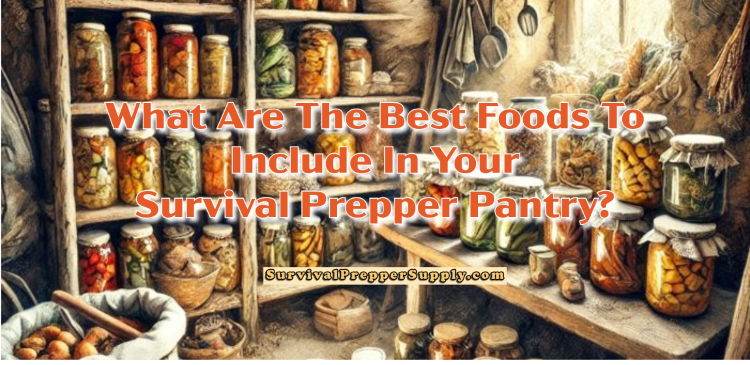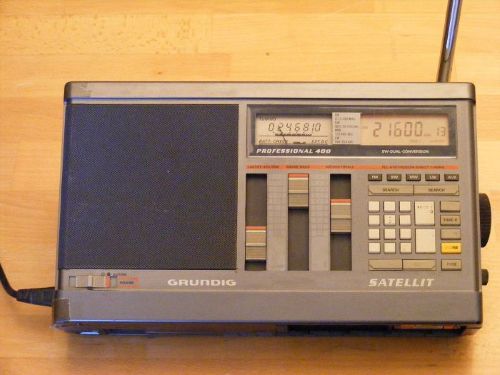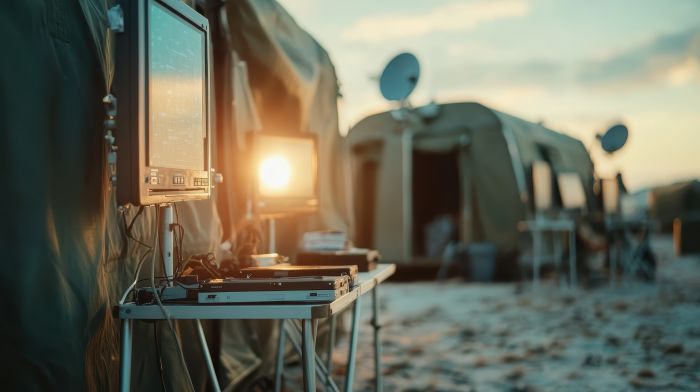The Basics for Beginner Preppers
Imagine waking up one day to find the shops empty or unable to go out due to unforeseen circumstances. Having a
A good start is understanding why a prepper pantry matters. It isn’t just about those dramatic doomsday scenarios; it’s also super handy for everyday inconveniences, like sudden job loss or natural disasters. By prepping, you’re giving yourself a safety net that takes the edge off those unpredictable moments.
Non-perishable foods are your best friends here. Think canned goods, pasta, rice, and beans. These items last long and are easy to store. They’re also things you probably already eat, so it’s more about stocking up than changing your diet. This makes the transition into prepping smoother and less overwhelming.
Shopping for your stockpile doesn’t need a special trip to a specialty store. Most items can be found at your local supermarket. You’ll build up your pantry without feeling like you’re breaking the bank by picking up a few extra cans or packets each time you shop.
Another tip for beginners: focus on everyday household items. Start with what you know and use. This makes storage more manageable and ensures that nothing goes to waste. The ‘store what you use, use what you store’ principle helps keep your pantry fresh and rotates stock effectively. Begin small, stay consistent, and you’ll be surprised at how quickly your pantry grows.
Here is a bar chart that visualizes the different categories of food items for a prepper pantry. Each bar represents the number of suggested food items within each category, helping you see at a glance where to focus your stocking efforts.
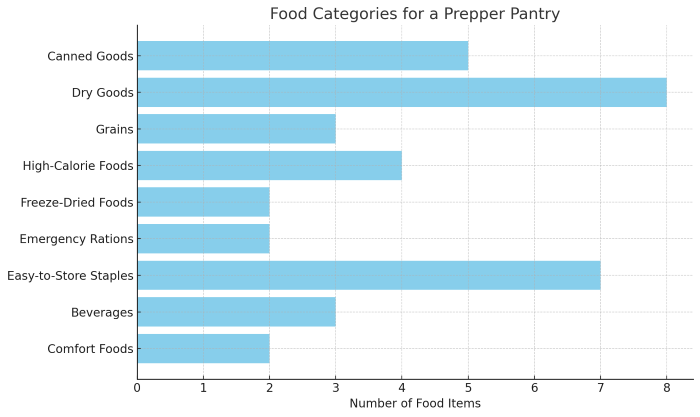
Stocking Up on Everyday Non-Perishables
Identifying what you already consume is a solid step forward. Look at your daily meals and identify the non-perishable components. Canned vegetables, soups, pasta, rice, and oats are staples that fit this category perfectly.
The FIFO (First In, First Out) model is your friend. When you buy new items, place them behind the older ones on the shelf. This way, you’re always using the oldest stock first. It keeps things fresh and helps you avoid waste.
Focusing on items with a long shelf life makes storage less hassle. Foods like lentils, dried beans, and certain grains can last for years if stored properly, so you aren’t constantly worried about things going bad.
Easy storage is another crucial factor. Go for items that stack well, like canned goods and boxed pasta. Clear containers and labels can be a game-changer, making it easier to see what you have on hand and when it expires.
Remember, prepping isn’t about buying foods you’ll never touch. It’s about having extra of what you already eat. This ensures that, even in an emergency, you’re eating familiar and comforting meals.
Table Categorizing Items for Your Food Pantry
| Category | Foods |
|---|---|
| Canned Goods | Vegetables, Soups, Canned fish (e.g., tuna, salmon), Canned meats (e.g., chicken, beef), Canned fruits |
| Dry Goods | Pasta, Rice, Lentils, Dried beans, Oats, Quinoa, Dried fruits, Nuts and seeds |
| Grains | Whole grains, Flour (whole wheat, all-purpose), Cornmeal |
| High-Calorie Foods | Peanut butter, Energy bars, Honey, Nut butters |
| Freeze-Dried Foods | Freeze-dried meals, Freeze-dried fruits and vegetables |
| Emergency Rations | Emergency ration bars, Vacuum-sealed kits |
| Easy-to-Store Staples | Instant noodles, Powdered milk, Salt, Sugar, Spices and herbs, Baking powder, Baking soda |
| Beverages | Coffee (instant or ground), Tea bags, Powdered drink mixes |
| Comfort Foods | Chocolate, Cookies or biscuits |
Specialty Survival Foods: A Long-Term Solution
When thinking long-term, specialty survival foods are worth considering. These are designed to last much longer than your typical supermarket finds, often boasting 20 to 30 years of shelf life. While they might not be part of your daily diet, they offer peace of mind, knowing you have a solid backup.
Freeze-dried meals, emergency ration bars, and vacuum-sealed kits are popular options. They’re made to be nutrient-dense and compact, perfect for storing in limited spaces. These foods often come with easy preparation methods — usually add water — making them incredibly convenient during an emergency.
Investing in survival food also means less frequent rotations compared to regular non-perishables. This can be a time-saver, allowing you to focus on other preparedness activities. Although slightly more expensive upfront, the long shelf life and convenience can make them a worthwhile investment.
These foods aren’t meant to replace your regular pantry items but to complement them. They serve as an excellent buffer for scenarios where restocking your pantry isn’t possible. Think of them as your emergency fallback that you only crack open when truly needed.
Integrating these items into your stockpile also means considering your nutritional needs. While most survival foods are designed to be balanced, paying attention to calorie content and dietary restrictions is wise. This ensures you and your loved ones stay healthy even during an emergency.
Nutritional and Caloric Considerations
When stocking your prepper pantry, nutrition and calories shouldn’t be overlooked. It’s not just about having enough food; it’s about having the right food that keeps you going. Nutrient-dense foods provide more vitamins and minerals than calorie-dense foods with empty calories. Think canned fish, nuts, seeds, and dried fruits. These pack a nutritional punch and are relatively easy to store.
Caloric density is equally essential, especially in an emergency. Foods like peanut butter, energy bars, and whole grains offer a lot of calories without taking up too much space. They’re essential for keeping energy levels up, particularly if physical activity is required. Storing a mix of high-calorie and high-nutrient foods strikes the right balance.
Another crucial aspect is paying attention to dietary restrictions. Whether you’re gluten-free, vegetarian, or any other specific diet, ensure your pantry includes options that meet these needs. Eating foods you’re accustomed to can also provide comfort and a sense of normalcy in stressful times.
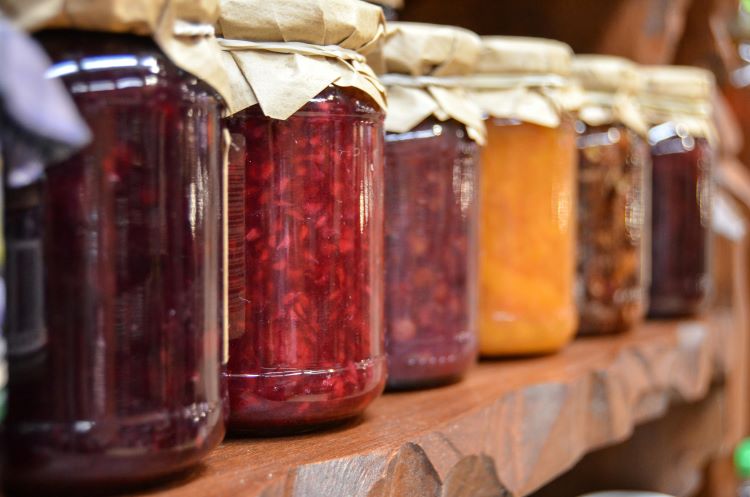
Photo by Pixabay
Another consideration is the ease of preparation. While canned and freeze-dried foods usually just require adding water or simple heating, others might require more effort. You don’t want to spend too much time cooking in an emergency. Ideally, choose foods that are ready-to-eat or require minimal preparation.
A well-rounded approach ensures that your pantry isn’t just a closet full of calories but a reliable source of balanced meals. This way, you’ll survive and maintain decent health and well-being.
Smart Shopping and Storage Tips
Shopping can make or break your prepper pantry. A good strategy is to shop in the outer aisles of the supermarket. This is where you’ll find the freshest foods, such as fruits, vegetables, meats, and dairy. While these aren’t long-term storage items, they can be preserved through canning, freezing, or dehydrating methods. This gives you a bit more variety and freshness in your stockpile.
Space is always a restriction when prepping. Not everyone has a spare room or basement for storage. Make use of all available space efficiently. Shelving units, under-bed storage, and wall-mounted racks can help you maximize what you have. Clear containers make it easier to see what’s inside and keep track of your supplies.
The well-organized pantry is your friend here, saving you time and effort. Label everything with the date of purchase and expiration date. Regularly check your stocks and rotate them using the FIFO method to keep everything fresh.
Pantry Organization
Rotating items in your prepper pantry efficiently ensures that your food stays fresh and nothing goes to waste. Here’s how you can do it:
- Use the FIFO Method (First In, First Out):
- When you add new items to your pantry, place them behind the older ones.
- Always use the items at the front first. This way, older stock gets used up before it expires.
- Label Everything:
- Clearly label each item with the date of purchase and expiration date.
- This makes it easier to identify which items need to be used first.
- Regularly Check Your Stock:
- Periodically go through your pantry to check expiration dates.
- Move items close to expiring to the front so they get used next.
- Organize by Expiration Date:
- Arrange items on your shelves by their expiration dates.
- Items with the nearest expiration date should be placed at the front.
- Create a Pantry Inventory:
- Keep a list of all the items in your pantry and their expiration dates.
- Review this list regularly to plan meals around items approaching expiration.
- Plan Meals Around Your Stock:
- Incorporate pantry items into your regular meal planning.
- This helps rotate stock and ensures you’re storing food and using it.
- Set Reminders:
- Use a calendar or app to set reminders for checking your pantry.
- This can be particularly useful for items with a longer shelf life that are easily forgotten.
Following these steps, you can maintain a well-organized pantry that keeps your food supplies fresh and ready for use, ensuring nothing goes to waste.
Think about the ease of access as well. Place frequently used items within easy reach and emergency-only in more tucked-away spaces. This keeps your everyday cooking hassle-free while ensuring your emergency supplies remain undisturbed.
Finally, consider the little things that can make a big difference.
- Moisture absorbers,
- oxygen absorbers,
- and airtight containers can extend the shelf life of many foods.
A detailed inventory list can also help you track what you have and what you need to replenish.
Shelf-life Tips for Longevity
Here are some helpful shelf-life tips to help extend the longevity of your pantry items:
- Store in Cool, Dry Places:
- Heat and moisture can significantly reduce the shelf life of food. Keep your pantry items in a cool, dry area, away from direct sunlight.
- Use Airtight Containers:
- Transfer dry goods like flour, rice, and beans into airtight containers to protect them from moisture, pests, and air exposure, which can cause them to spoil faster.
- Vacuum Sealing:
- Consider vacuum-sealing items like grains, pasta, and freeze-dried foods for long-term storage. This method removes air, which helps prevent oxidation and extends shelf life.
- Avoid Temperature Fluctuations:
- Keep food stored at a consistent temperature. Frequent temperature changes can cause condensation inside packages, leading to mold or spoilage.
- Use Moisture Absorbers:
- To keep sensitive items such as dried fruits, nuts, or powdered goods dry, place moisture absorbers (like silica gel packets) in containers with them.
- Oxygen Absorbers:
- Oxygen absorbers in sealed containers extend the shelf life of dry goods by removing oxygen, which is necessary for the growth of spoilage organisms and insects.
- Check Expiration Dates Regularly:
- Make it a habit to check the expiration dates on your pantry items periodically. Rotate items so that those closest to expiring are used first.
- Freeze Perishable Items:
- If you have extra space, freezing certain items like flour, nuts, or even pasta can help extend their shelf life significantly.
- Keep Spices and Herbs Fresh:
- Store spices and herbs in tightly sealed containers in a dark, cool place. Whole spices generally last longer than ground ones.
- Separate Potatoes and Onions:
- Store potatoes and onions separately, as they can emit gases that cause each other to spoil more quickly.
- Seal Open Packages:
- After opening packaged foods like cereal or chips, seal the package tightly with a clip or transfer the contents to an airtight container to maintain freshness.
- Avoid Overbuying:
- Only purchase what you can realistically use before it expires. This reduces waste and ensures that your stock remains fresh.
By following these tips, you can help maximize the shelf life of your pantry items, keeping your supplies fresh and ready to use for longer periods.
Efficient Pantry Storage Organization and Space Tips
- Use Clear, Stackable Containers:
- Store dry goods like pasta, rice, and cereals in clear, stackable containers. This saves space and allows you to see what’s inside and how much you have left.
- Label Everything:
- Clearly label containers with their contents and expiration dates. This will help you keep track of what you have and when it needs to be used.
- Utilize Vertical Space:
- Install additional shelves or use shelf risers to take advantage of vertical space. This helps you store more items without cluttering your pantry.
- Use Door Organizers:
- Hang organizers on the back of pantry doors for storing smaller items like spices, canned goods, or snacks. This frees up shelf space and keeps everything accessible.
- Group Similar Items Together:
- Organize your pantry by grouping similar items, such as baking supplies, canned goods, snacks, and grains. This will make it easier to find what you need and reduce the time spent searching.
- Store Frequently Used Items at Eye Level:
- Place items you use most often at eye level for easy access. Less frequently used items can be stored on higher or lower shelves.
- Use Baskets or Bins:
- Place smaller items or loose packages in baskets or bins. This keeps them organized and prevents them from getting lost or cluttered.
- Rotate Stock Regularly:
- Rotate your stock using the First In, First Out (FIFO) method. Place new items behind older ones to ensure that older items are used first.
- Consider Pull-Out Drawers:
- Install pull-out drawers in your pantry to make reaching items at the back of shelves easier. This maximizes accessibility and reduces the risk of items being forgotten.
- Keep a Pantry Inventory:
- Maintain a list of what’s in your pantry, quantities, and expiration dates. This helps with meal planning and prevents overbuying.
- Maximize Corner Spaces:
- Use lazy Susans or turntables in corner spaces to store items like spices, oils, or condiments. This makes it easier to access items stored in hard-to-reach areas.
- Use Under-Shelf Baskets:
- Install under-shelf baskets to create additional storage space for small items such as packets, wraps, or snacks.
- Install Hooks or Pegboards:
- Add hooks or pegboards to the walls or inside doors to hang lightweight items like kitchen towels, utensils, or small baskets for storing small items.
- Avoid Overstocking:
- Only keep as much as your pantry can comfortably hold. Overstocking can lead to clutter, making it harder to keep things organized and accessible.
By implementing these storage tips, you can create a more organized, efficient pantry that maximizes your available space and keeps your food items easily accessible.
Have you started your survival foods pantry? Where are you storing your items? Are you able to have a large area or a small area for your survival food storage pantry? Please leave your questions or answers in the comments below to assist other preppers with their storage ideas,
